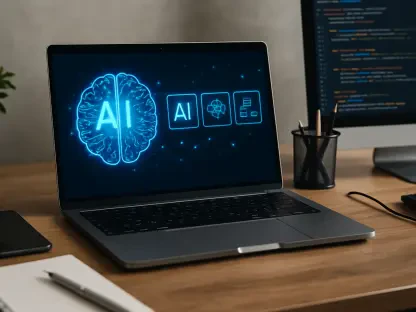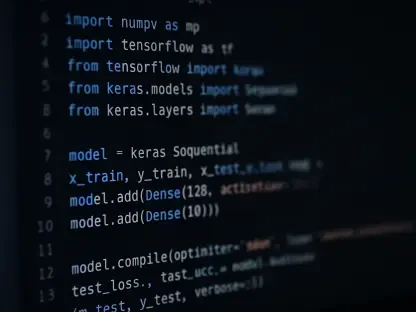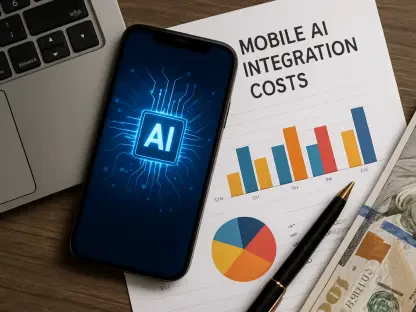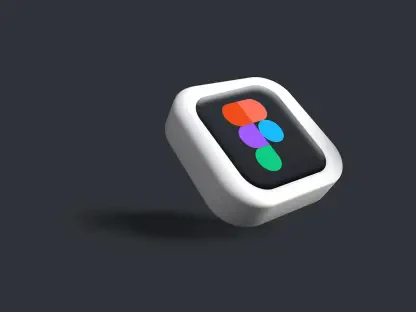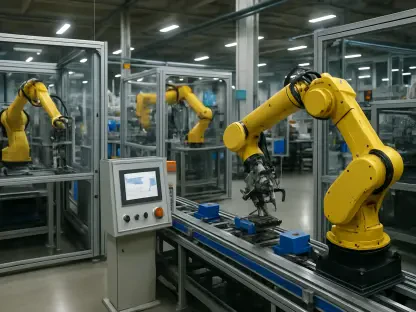Introduction to Vibe Coding and AI’s Role in Software Development
In an era where technology evolves at breakneck speed, a staggering shift has emerged in software development with the rise of vibe coding, where anyone can craft applications by simply describing ideas in plain language to generative AI. This trend, powered by large language models (LLMs), is redefining how code is created, breaking down long-standing barriers of technical expertise. No longer confined to seasoned programmers, the ability to build software now rests in the hands of entrepreneurs, hobbyists, and even students, sparking curiosity about how far this accessibility can stretch.
The industry stands at a pivotal moment, with vibe coding democratizing app creation on an unprecedented scale. Platforms leveraging AI have surged in popularity, enabling both technical and non-technical users to transform vague concepts into functional code within minutes. This shift is fueled by major players in the AI space, including developers of leading LLMs like OpenAI and Anthropic, whose technological advancements continue to refine natural language processing capabilities for coding tasks.
Compared to traditional methods, AI-driven coding slashes the time and skill required to develop software, turning weeks of manual work into mere seconds of interaction. This efficiency is not just a convenience but a game-changer, allowing rapid prototyping and iteration. As this landscape evolves, understanding AI’s role becomes essential to harnessing its full potential in reshaping software development norms.
The Concept of AI Coding Personalities
Defining AI Coding Styles and Their Impact
Just as human developers exhibit distinct approaches to writing code, AI systems also possess unique coding personalities that shape the structure and quality of their output. These personalities mirror variations seen in human styles, ranging from clean and readable to complex and obscure, influencing critical aspects like performance and maintainability. Recognizing these traits in AI-generated code is key to evaluating its suitability for specific projects.
The impact of these coding styles is profound, often determining the security and efficiency of the resulting software. For instance, some AI models may prioritize speed over robustness, while others emphasize detailed documentation at the expense of simplicity. Studies have categorized these tendencies into distinct personas, such as the “Baseline Performer,” which sticks to minimal functionality, or the “Senior Architect,” known for crafting sophisticated, scalable solutions.
Such classifications highlight how an AI’s inherent style can either enhance or hinder a project’s success. A model prone to convoluted logic might introduce vulnerabilities, whereas one focused on clarity could ease future updates. This variability underscores the need for vibe coders to delve deeper into the characteristics of the tools they employ.
Why Understanding Personalities Matters for Vibe Coders
Grasping the coding personality of an AI model is crucial for achieving desired outcomes in software development. Each project’s unique demands—whether for rapid prototyping or secure enterprise solutions—require alignment with a model’s strengths. Ignoring this can lead to mismatched results, where the generated code fails to meet expectations or introduces unnecessary complexity.
A mismatch between an AI’s style and a coder’s needs often breeds frustration, particularly for those new to vibe coding. A model that generates overly intricate code might overwhelm a beginner, while a simplistic output could disappoint a professional seeking depth. This disconnect can stall progress, emphasizing the importance of selecting an AI whose personality complements the task at hand.
Aligning AI styles with project goals not only boosts efficiency but also enhances the usability of the final product. Vibe coders benefit from tailoring their approach, perhaps by experimenting with different models or refining prompts to elicit specific styles. This strategic alignment paves the way for smoother development cycles and more reliable software solutions.
Challenges in AI-Driven Vibe Coding
Despite its transformative potential, vibe coding faces significant hurdles that temper its promise of seamless automation. One prominent issue is the frequent lack of error checking in AI-generated code, which can harbor bugs or incomplete logic. Such flaws often render the output unusable without substantial debugging, posing a challenge to the notion of effortless development.
Security vulnerabilities further complicate the landscape, as AI models may produce code susceptible to cyber threats. This risk is particularly concerning for applications handling sensitive data, where a single oversight could have dire consequences. Additionally, the need for human intervention to refine and validate code undermines the vision of fully autonomous programming, revealing a gap between expectation and reality.
To mitigate these obstacles, developers and users must adopt better prompting techniques to guide AI toward more robust outputs. Selecting models with proven track records in specific domains can also reduce errors. Industry collaboration to integrate advanced validation tools into AI platforms represents another promising avenue to address these persistent challenges.
Navigating the Evolving Landscape of AI Coding Tools
The realm of AI coding technology is in constant flux, with developers regularly updating models to enhance their code generation capabilities. These advancements aim to tackle existing limitations, such as inconsistent quality or security gaps, by refining algorithms and introducing specialized features. Staying abreast of these changes is vital for vibe coders seeking to leverage the latest improvements.
Industry efforts are increasingly focused on addressing critical pain points like error handling and cybersecurity. Major AI providers are investing in frameworks that prioritize safe, reliable outputs while also allowing for greater customization to suit diverse user needs. This push toward adaptability signals a maturing market, where tools are becoming more attuned to real-world applications.
Rapid progress in this field suggests that more dependable AI coding solutions are on the horizon, potentially transforming vibe coding practices. As updates roll out over the coming years, from 2025 onward, users can expect tools that better balance speed with precision. This evolution will likely empower a broader range of projects, from simple apps to complex systems, with greater confidence in the results.
Future Prospects of Vibe Coding with AI Personalities
Looking ahead, vibe coding stands poised for significant growth, driven by emerging technologies that could further streamline AI-driven development. Innovations in natural language understanding and machine learning are expected to refine how models interpret user intent, potentially reducing errors and enhancing output quality. These advancements may usher in an era where vibe coding becomes a staple across industries.
User preferences for accessible and efficient coding solutions are likely to shape the trajectory of AI tools, pushing developers to prioritize intuitive interfaces and personalized experiences. As demand grows for platforms that cater to non-technical audiences, the integration of AI personalities tailored to specific skill levels could become a defining feature. This trend points to a future where coding is as approachable as everyday conversation.
Global tech dynamics, including increased investment in LLM design, will also influence this space, fostering competition and innovation. Factors such as regulatory frameworks for AI safety and cross-border collaboration could accelerate or redirect progress. Keeping an eye on these elements will be essential for anticipating how vibe coding evolves in response to broader technological currents.
Key Takeaways and Recommendations for Vibe Coders
Vibe coding, with its reliance on AI personalities, offers a groundbreaking yet nuanced approach to software development. Understanding the distinct coding styles of AI models remains a cornerstone for achieving optimal results, as these traits directly impact code quality and project success. This insight equips users to navigate the complexities of AI-generated outputs with greater precision.
For practical application, vibe coders are encouraged to craft detailed prompts that specify desired coding styles, ensuring alignment with project objectives. Exploring various AI models to identify those best suited for specific tasks can further enhance outcomes. Additionally, staying informed about updates to AI tools will help users capitalize on improvements in functionality and security.
Reflecting on the journey through this report, it becomes clear that vibe coding holds immense potential to redefine software development, provided challenges are met with informed strategies. Moving forward, stakeholders should prioritize collaboration to develop robust validation mechanisms for AI outputs. Investing in education around prompting techniques and model selection will empower users to maximize benefits, while industry leaders need to accelerate efforts in fortifying security protocols, ensuring that vibe coding evolves into a trusted pillar of technological innovation.


